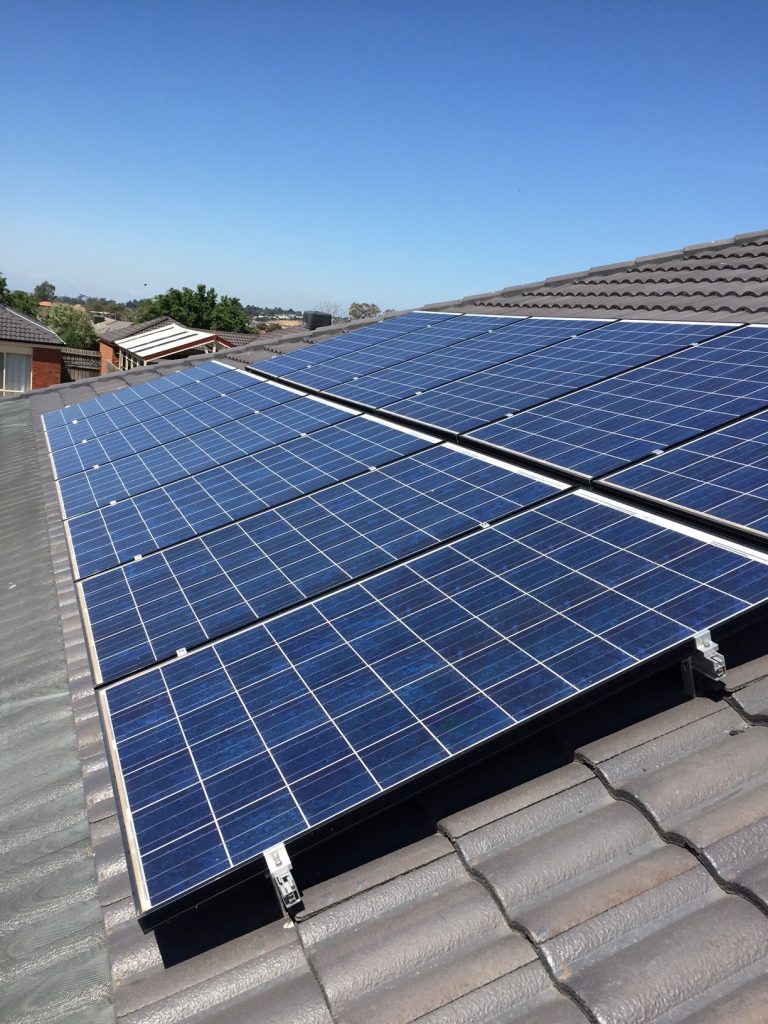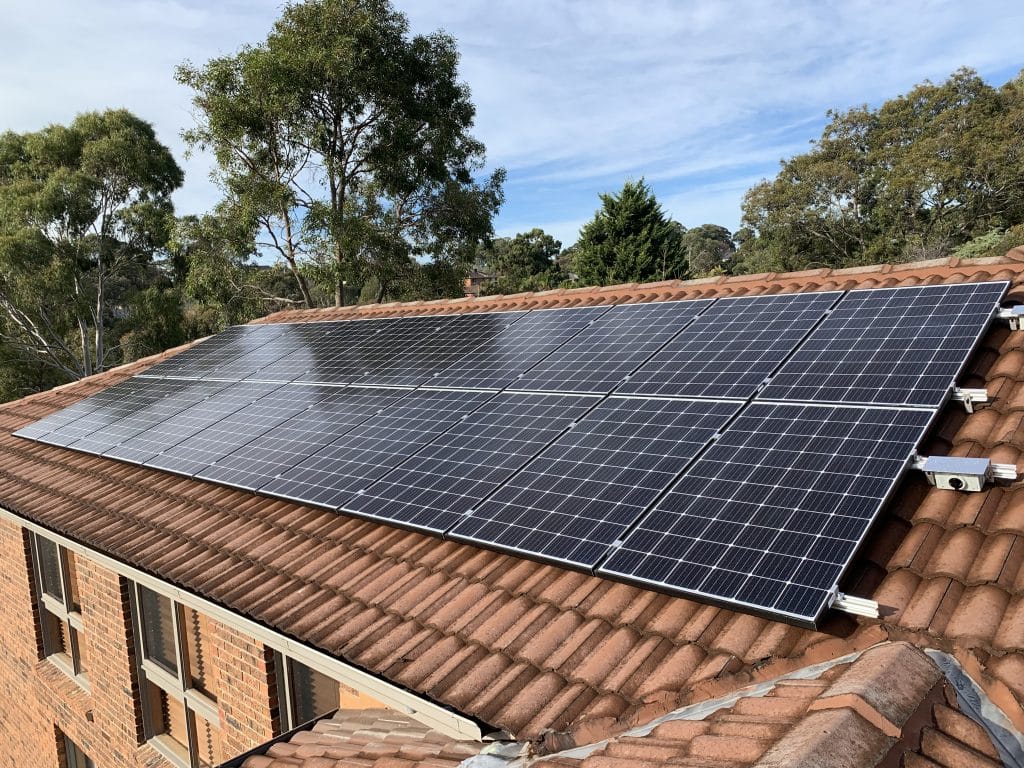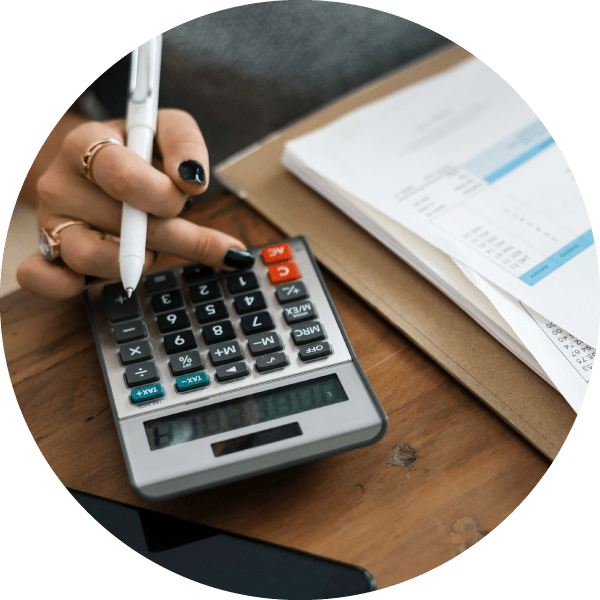
Do you want to lower your monthly electricity costs while helping the planet? You may be wondering if the cost of installing solar panels is justified.
After all, the upfront cost of installing a solar power system on a roof can be substantial, and the potential financial benefits may be difficult to predict.
But have no fear! If you’re wondering if it’s worth it to invest in solar energy solutions, we’ll answer that question and more in this post.
To help you make an informed choice, we’ll also debunk some more widespread myths surrounding the transition to clean energy sources like photovoltaic cell technology.
If you’re wondering whether or not adopting a greener way of life will save you money, this article should clarify things.
How Much Can Solar Panels Save You?
Increasingly Australians are trying to cut costs by converting to renewable energy sources like solar panels. Still, the most common question is, “How much cash can I save on solar panels?” Electricity rates in Australia have increased dramatically over the past few years.
There hasn’t been a better moment to transition to solar energy, and that’s the short answer.
The price of solar panels has never been lower; nowadays, a decent, average-sized 8 kW solar system can be purchased and installed for as little as $8000 to $9000.
Yet with the rapid development of solar technology, you can see a profit from your investment in as little as three to five years, all while saving money on your annual electricity bill.
Let’s do the math and see how much money you can save with solar panels.
Learn About The Initial Cost Of Solar Panels
To calculate your long-term savings from adopting solar, we need to know how much you can expect to spend upfront on a system for your property or company.
Several factors, like your location and the solar technicians you choose to deal with, will determine your final bill, so keep that in mind as you create your first estimate.
- Solar energy subsidies and incentives are offered by the federal government or the Clean Energy Council.
- What is involved in getting solar panels installed is different depending on who you go with for supplies and labour.
- Number and type of solar panels used in the system.
- What size and style of solar inverter do you need
- If you plan on purchasing solar batteries.
- Framing tools and other parts of the solar array will be used.
- Assurances and contracts about servicing after the deal has closed.
Considering the factors above, the tables below outline a broad range of initial costs for solar energy systems in Australia, both for homes and businesses. These expenses can vary substantially, as you’ll discover, and should be factored in before estimating your long-term solar savings.
Learn About The Factors That Influence Ongoing Solar Power Savings
Now that we have a good idea of how much it will cost to install solar panels on your house or company, we can calculate your potential savings on your monthly electricity bills.
As before, many factors influence the amount of money you could save by switching to solar energy.
Feed-In Tariff Rates
Most consumers will contract with their local electricity provider, who will then purchase the surplus solar power. Feed-in tariffs allow homeowners to get paid to put excess solar power back into the grid.
In Australia, electricity rates typically range from 7 to 11 cents per kilowatt hour (c/kWh). It would help to look around for the greatest bargain possible before making any long-term financial plans.
Consider Solar Energy Storage
It is the moment to evaluate whether or not including a solar battery option would be even more beneficial in terms of cost avoidance. Solar batteries store the energy produced by solar panels so that they can be used at other times, such as when the sun isn’t out or at night.
The savings on your power bill from using your saved solar energy may be greater than the rebate you receive from your feed-in tariff, notwithstanding the initial investment.
Your Current Energy Consumption—As Well As The Size Of Your Solar System
Finding a system that fits your energy usage is essential to maximising your solar savings.
Your monthly electricity consumption can be found in kilowatt-hours on the back of your most recent utility invoices (kWh).
The sum you can save depends on the size of the solar power plant you install.
So, you should maximise your investment’s return by selecting a system that can produce electricity at a rate that matches your power demand while minimising the payback period.
Maintaining that equilibrium is essential. When a building’s electrical needs exceed what its solar panels can supply, the system automatically switches to drawing electricity from the electrical grid.
Nevertheless, if you build a solar system that’s too large for your needs, you will end up selling excess renewables back into the grid at a rate that may be lower than your electricity prices if the stream tariff rate declines.
What Affects Your Location Has On Solar Power Production

Just as where you reside will affect the initial investment in solar panels, so will it influence the amount of money you save in the long run.
Australia receives more sunlight per square metre than any other continent, making it ideal for solar energy collection.
However, even within a country, your total energy production will vary; for example, despite Queensland having more sunshine hours than any other state in the country, residents in Perth, Western Australia, may need larger solar systems to obtain the same results.
In Australia, How Long Does It Take For Solar Panels To Pay For Themselves?
Most homeowners who invest in a solar energy system via Renew Energy get a return on their investment in as little as three to four years, all while seeing their property value rise and their carbon footprint shrink.
The cash they save on their monthly electricity bill is often used to defray the cost of the panels. One of the most crucial questions to ask is at what point in time you wish your solar system to be self-sustaining.
In most cases, you may expect to save $400 yearly per kW while using solar energy. It means you can save up to about $2,000 per year by installing a 5 kW system, which is adequate to power the typical home around Perth, for example.
You can use this savings rate to determine if you want a mid-range system with a return on investment in three years, a top-of-the-line system with a return on investment in five years, or the quickest return possible, yet using the cheapest panels.
In terms of solar panels, we have found that you get what you want to pay for. Before agreeing to pay for an installation, you should learn about the market’s various pricing structures.
Know Your Risks With Cheap Solar Panels
Getting a return on investment from solar panels faster than the customary three to four years (let’s say, in two years) would necessitate purchasing solar panels with very low-quality components.
Underperforming panels at the lower end of the solar industry’s price range require costly maintenance, no-name manufacturers go out of business (taking your warranty with them), and incompetent installers don’t react to service calls.
It would be best if you gave some serious consideration to choosing the lowest pricing.
Instalment costs can be easily inflated by a few hundred dollars, but a professional service provider would never do this. Nevertheless, we know that some solar power providers will, with the customer bearing the brunt.
What Are The Benefits Of Premium Solar Panels?
If you can wait, investing in a premium or mid-range solar energy system with a return on investment of three to five years has many benefits, especially if you intend to install solar battery storage later.
A high-quality system may produce an abundant amount of renewable energy with zero upkeep.
In addition to lasting an average of seven decades longer than cheaper panels, it will also come with a much more robust product guarantee and superior aftercare from your installer.
Your budget and the time you intend to stay at your current home or business will play major roles. If you’re willing to wait for your money, high-quality solar panels are the way to go.
Because investing in premium solar systems pays dividends over the long term, Renew Energy provides access to the best solar power systems available.
Tips And Tricks For Saving Even More Money On Your Electric Bills
- Replace Incandescent Light Bulbs with Energy-Efficient LEDs: Because of their long lifespan and low energy consumption, LED bulbs can reduce your lighting expenditures by as much as 80 per cent. Save time and money compared to replacing.
- Please turn off all lights and electronics when they are not in use. When opposed to a system that’s left on standby, turning off the PowerPoint will save significantly more power and money
- Washing clothes in cold water and letting them dry naturally is more efficient than using a washing machine, since most of the energy needed by a washing machine goes towards heating the water. If you switch from hot water to cold water, you can save about $115 per year. Drying clothes by hanging them outside or using a fan indoors is more efficient than using a dryer.
- During the hours of 4 pm-7 pm, you should hold off on running the dishwasher: The most cost-effective times to use energy during the week are before 4 p.m. and after 9 p.m. You can cut your annual spending by as much as $100 by following these steps.
- To keep your perishables at a safe temperature, keep your refrigerator at 4 degrees Fahrenheit, your freezer at 15 degrees, and the air conditioning at 78 degrees. Be sure that there are no openings around the fridge door that could let cool air escape.
- Install Double Glazed Windows: Double glazed windows can significantly reduce heat loss during colder months and heat gain during warmer months. This insulation improvement can lead to substantial energy savings by decreasing the need for heating and cooling, thus lowering your overall energy bills.
So, Is It Worthwhile To Invest In A Solar Power System?
To put it briefly: sure, you can afford a good solar system and work with reliable solar companies.
That’s why so many people and businesses in Australia are switching to solar power: it makes economic sense.
Properly configured solar panels can provide electricity in as little as 5 cents per kilowatt-hour (kWh), resulting in a payback period of only three to five years.
You may reclaim control over your energy usage, lessen your environmental impact, boost your home’s resale value, and pocket more cash by installing solar panels and moving off the grid, provided you do your research.
Investment in a solar power system has increased in popularity as a result of rising concerns about climate change and rising electricity prices.
The photovoltaic (PV) panels in a solar power system convert sunlight into electricity that can be used to run electronics and appliances.
There are a number of variables to think about before committing to a solar energy system. There is the initial investment, the cost of electricity, the environmental benefits, and the potential return on investment.
Cost of Installation
Costs associated with installing a solar energy system range widely, depending on factors such as system size, equipment quality, and geographic location.
The price of solar panels has dropped dramatically over the past decade, making this form of renewable energy more affordable for homeowners.
Unfortunately, for some homes and businesses, the initial investment in installation remains a stumbling block.
Potential Savings on Electricity Bill
The potential reduction in monthly electricity costs is a major perk of installing a solar power system.
Consumers can lessen their reliance on the grid and save money on electricity costs by generating some or all of their own electricity.
The size of the solar power system, the amount of electricity used, and the cost of electricity in the area are just a few of the variables that affect how much money can be saved.
Environmental Benefits
The benefits to the environment from using solar power are another advantage. Solar energy generation eliminates the release of glasshouse gases, a major cause of global warming.
Consumers can lessen their impact on climate change and help green the planet by switching to solar energy.
Return on Investment
A solar energy system investment may also generate a profit.
Over time, consumers can recoup the cost of installation through lower electricity bills and surplus electricity generation that can be sold back to the grid.
The ROI is calculated by figuring the total installation costs, total electricity produced, and the local electricity rate.
In conclusion, solar energy systems can be a good financial move for homes and businesses. Solar power is an attractive option for many consumers because of the potential savings on electricity bills, environmental benefits, and return on investment, despite the higher initial cost of installation.
Do your homework and think about the big picture before making a final call. Factors like system size, equipment quality, and installation site must all be taken into account.
Putting up solar panels is a great way to help the environment and save money on your monthly electricity bill. It can be difficult to estimate the potential financial benefits of installing a solar power system on a roof and the upfront cost can be quite high.
Knowing how much a solar panel system will cost upfront will help you make a more educated decision about whether or not it is a good fit for your home or business.
Keep in mind that your final cost will be affected by things like your location and the solar technicians you choose to work with as you create your initial estimate.
The federal government and the Clean Energy Council provide financial incentives and rebates for installing solar panels, and the cost of having solar panels installed varies according to factors such as the size and type of solar panels, the solar inverter, the framing tools, and the other components of the solar array.
Producing an abundance of renewable energy with no maintenance costs is just one of the many advantages of investing in a premium or mid-range solar energy system with a return on investment of three to five years.
Poor panels have a long list of problems, including the need for constant upkeep, the bankruptcy of unknown manufacturers, and the failure of inept installers to respond to service requests.
High-quality solar panels are the best option if you can wait for them to pay off.
Best solar power systems are made available through Renew Energy. Replace incandescent bulbs with energy-efficient LEDs, turn off lights and electronics when not in use, wash clothes in cold water and let them dry naturally, put off running the dishwasher, and store perishables at the appropriate temperature to save money on your electric bill.
As people become more aware of the effects of global warming and as the cost of conventional power sources continues to rise, solar energy systems are gaining in popularity.
With a payback period of just three to five years, investing in a solar power system can provide electricity for as little as 5 cents per kilowatt-hour (kWh).
Saving money on electricity costs, helping the environment, and getting a return on your investment are all good reasons to consider installing a solar energy system in your home or business.
While the benefits are clear, widespread adoption has been hampered by the high cost of getting things set up. Prior to making a final choice, factors like system size, quality of equipment, and installation location should be considered.
